Hidden Depths
In which Norm spins up Shout! Studios' new 4K disc of Robert Zemeckis' WHAT LIES BENEATH and an Arrow collection of Toei straight-to-video actioners.

Back to the Future is one of the great works of American popular cinema, so I’ll always show up for Robert Zemeckis’ next thing. I haven’t really enjoyed any of them since Cast Away, but I keep going, trying to find the heartbeat he insists is there.
It all went sideways with Forrest Gump, I think. Death Becomes Her had introduced him to the digital manipulation of his actors, of course, but it was still mostly practical; with Gump he could do even more, and luxuriate in the environments he created. Those long, elaborate camera moves staring in wonder at Tom Hanks on a park bench left audiences thinking they’d experienced something profound; the movie was a massive hit and won a lot of awards, and Zemeckis never looked back, embracing a slower, more contemplative pace no matter what sort of movie he was making – and increasingly relying on digital effects to achieve specific shots (like the mirror moment in Contact) or create environments (like the plane crash in Cast Away) that give the audience something they’d never seen before.
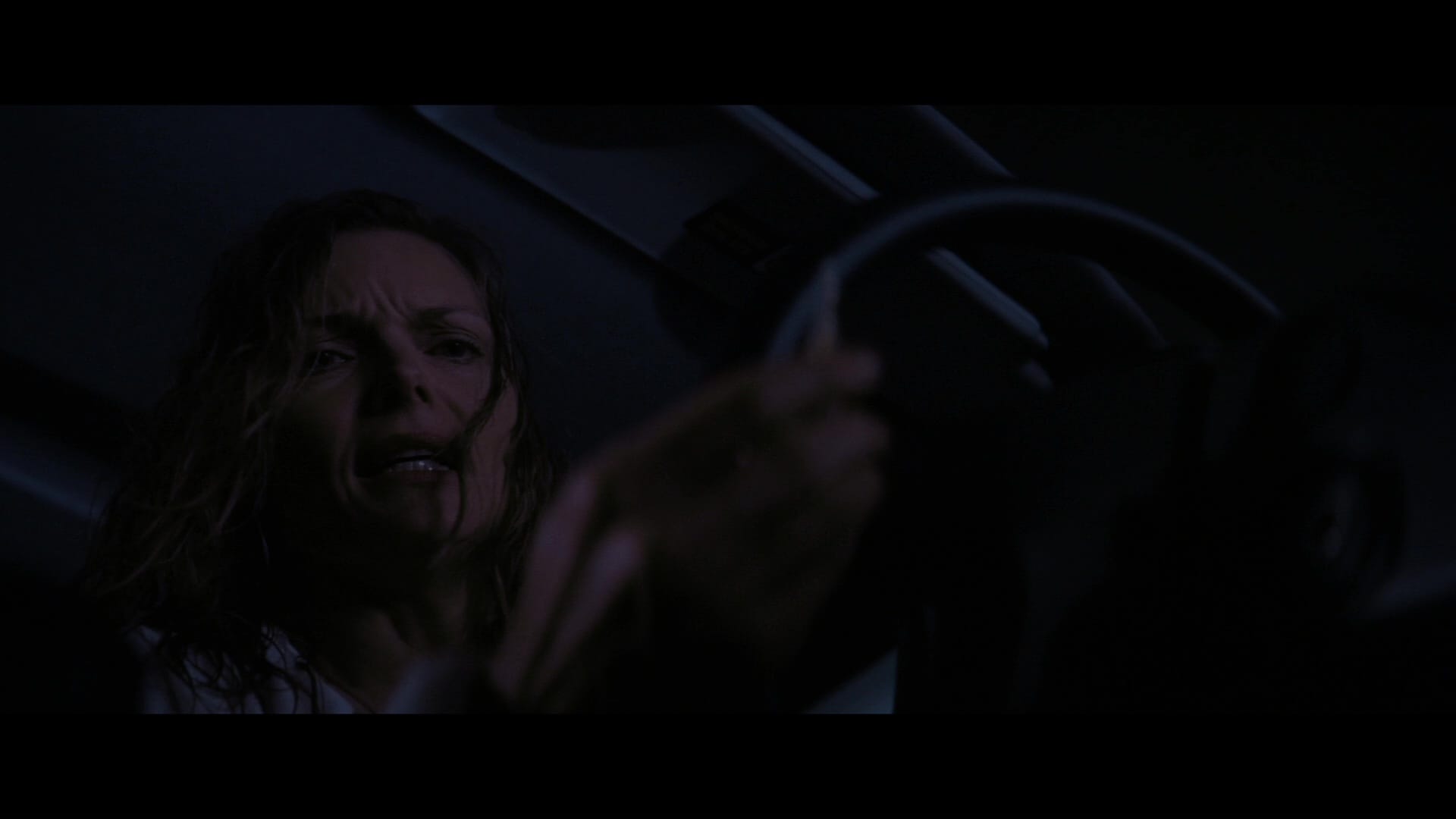
But as David Koepp so eloquently put it, just because you can do something doesn’t mean you should, and as CGI expanded Zemeckis’ sense of what was possible he got further and further into its weeds, losing himself to motion-capture projects for more than a decade and returning to live-action to make films that still feel slathered in artifice.
Flight, The Walk, Allied and Welcome to Marwen all feel airless and processed, hollow imitations of life that never breathe on their own – unless you saw The Walk in IMAX 3D, where its third act lets Joseph Gordon-Levitt re-enact Philippe Petit’s stunning walk between the towers of the World Trade Center in terrifying detail. In 2D, it’s just a weightless effects demo.
Last year’s Here, a fixed-camera exercise adapted from a graphic novel with similar restrictions, felt like the weirdest greatest-hits album ever conceived: It’s got time travel of a sort, and a Forrest Gump reunion with Tom Hanks and Robin Wright as a couple whose relationship is tracked from young love to old age, and a digital gloss that immediately tells you none of this is real or meaningful, despite Zemeckis’ attempts to pull at our heartstrings by showing the secret struggles of American suburbia.
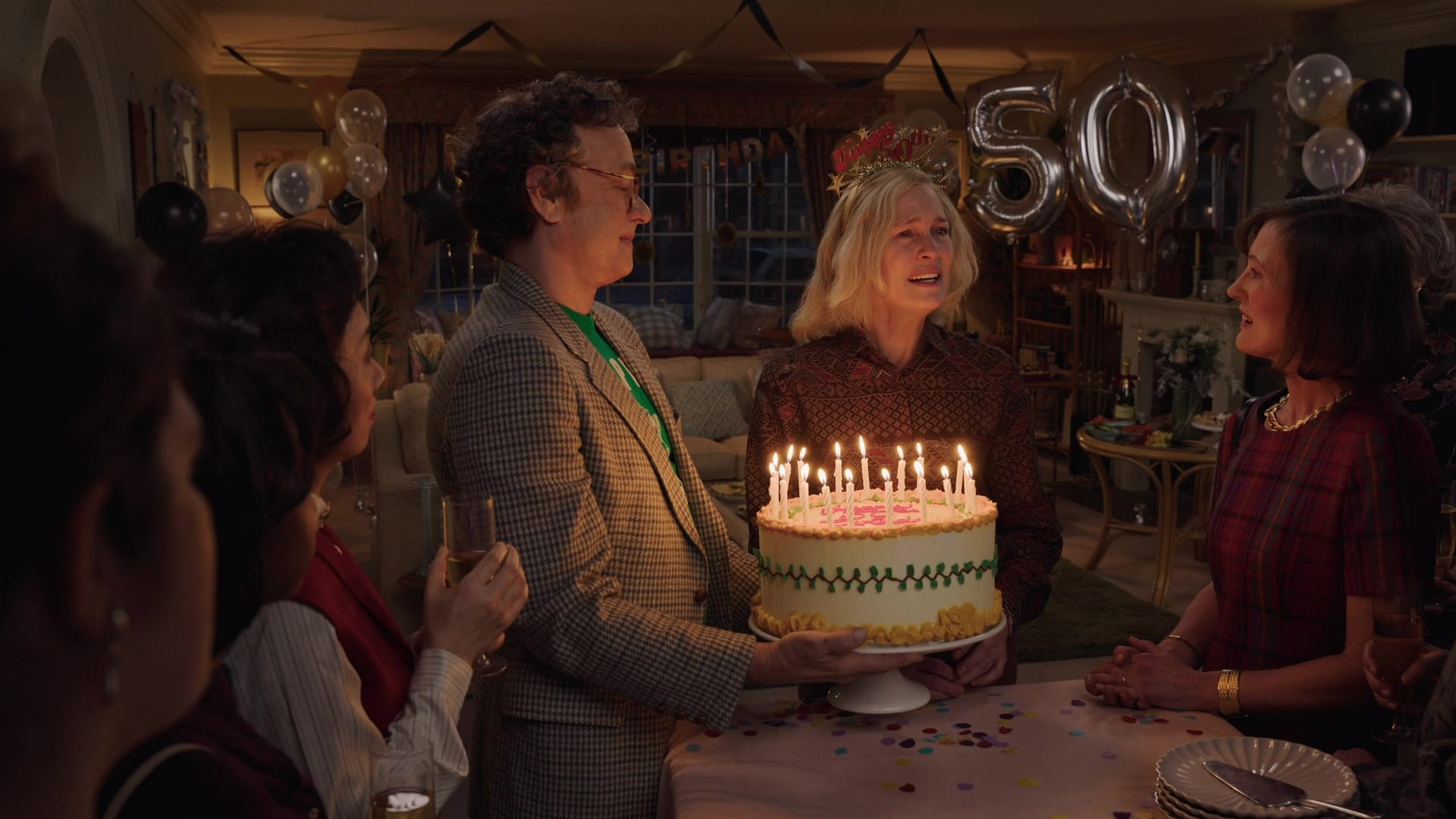
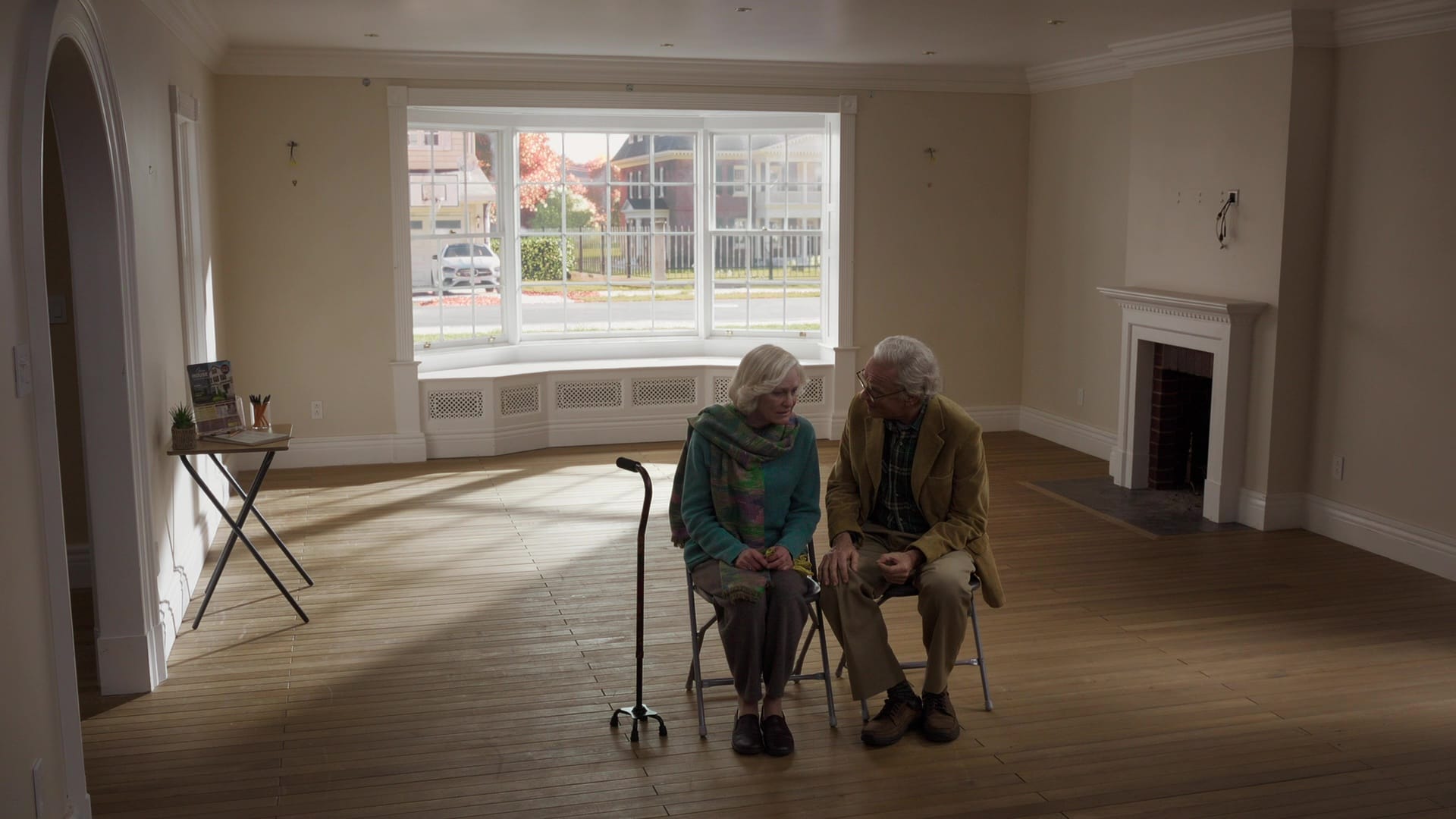
It occurred to me that if he was making Cast Away now, Zemeckis would probably realize Hanks’ emaciation digitally, rather than subject the actor to four months of extreme dieting.
But without Hanks losing the weight, the movie wouldn’t have had a production hiatus – and Zemeckis wouldn’t have shot What Lies Beneath in that window, keeping his entire crew employed and knocking out the Hitchcockian thriller that now looks like the bridge between his film filmography and the fully digital era.

Released in the summer of 2000, What Lies Beneath was a decent hit for the nascent DreamWorks SKG, grossing nearly $300 million on a budget of $100 million, but having none of the staying power or cultural impact of Zemeckis’ other films. Maybe audiences weren’t into the empty-nest angst of Michelle Pfeiffer and the mildly insistent horniness of Harrison Ford being disrupted by weird supernatural hallucinations and musical stings. It also didn’t help that the entire plot was spoiled in the marketing materials, which revealed not one but both of the twists that are doled out over two considered hours. And beyond the twists, there’s just not that much to it —except for the performances.
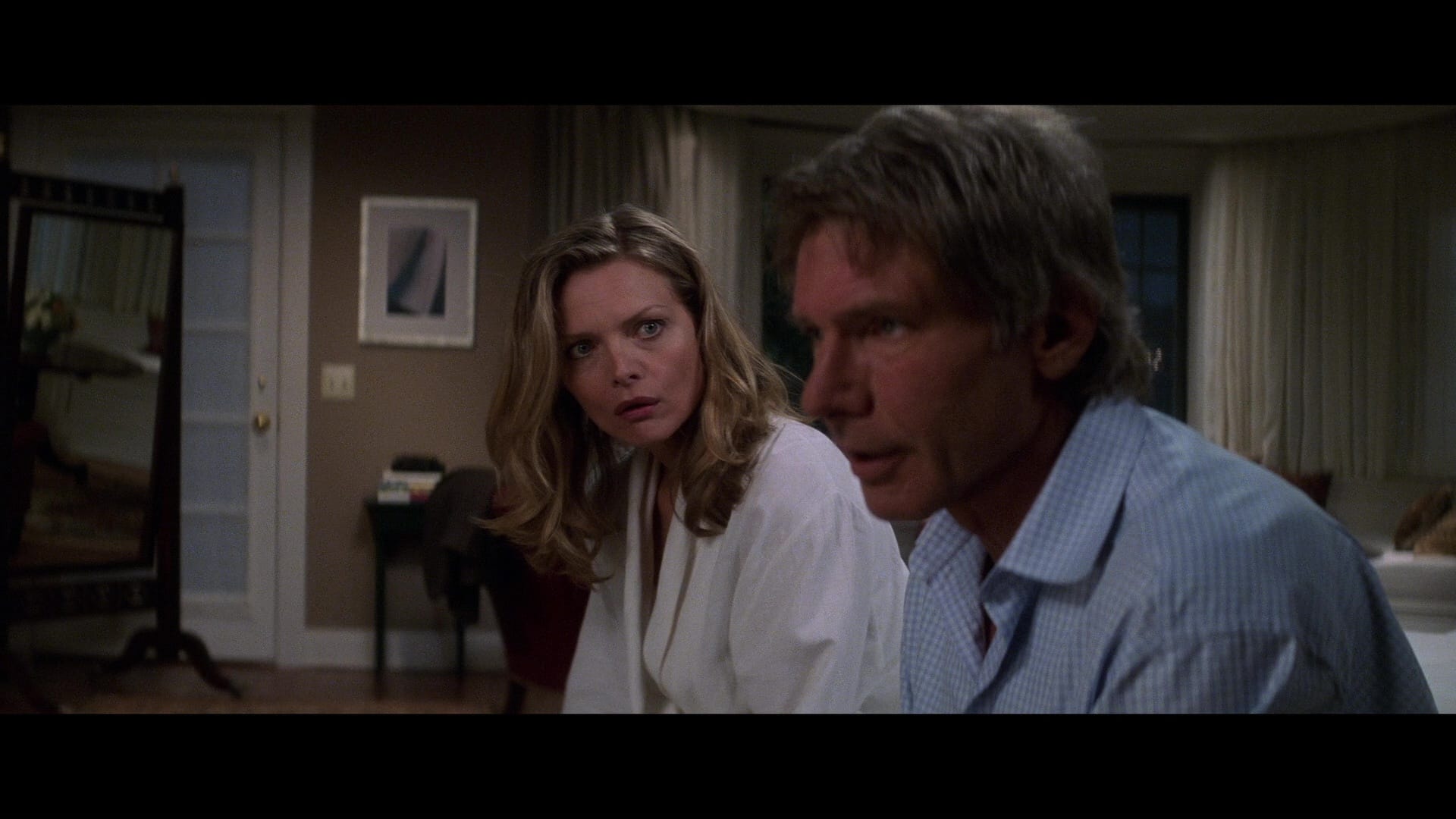
A little background: In 2000, neither Pfeiffer nor Ford was exactly at the top of their game. They were still A-list names, but Ford was aging out of action roles and finding himself in the same spot as Gene Hackman had in the ’80s, playing a lot of authority figures and hoping one of his pictures would hit. (Air Force One had done that in 1997, but no one praised that movie for the acting; mostly, this was Ford’s time in the wilderness, lending his grumpy charisma to misfires like Six Days, Seven Nights and Random Hearts.
Pfeiffer, for her part, was raising two children and pulling back on big commitments, pivoting to ensemble pieces and the odd voice role. It’s also likely that, as a woman in her early forties, she was either being offered a lot of wife or girlfriend roles, or not getting offers at all; What Lies Beneath’s Claire Spencer was a starring role with a limited production window, and I’m sure both of those things appealed.
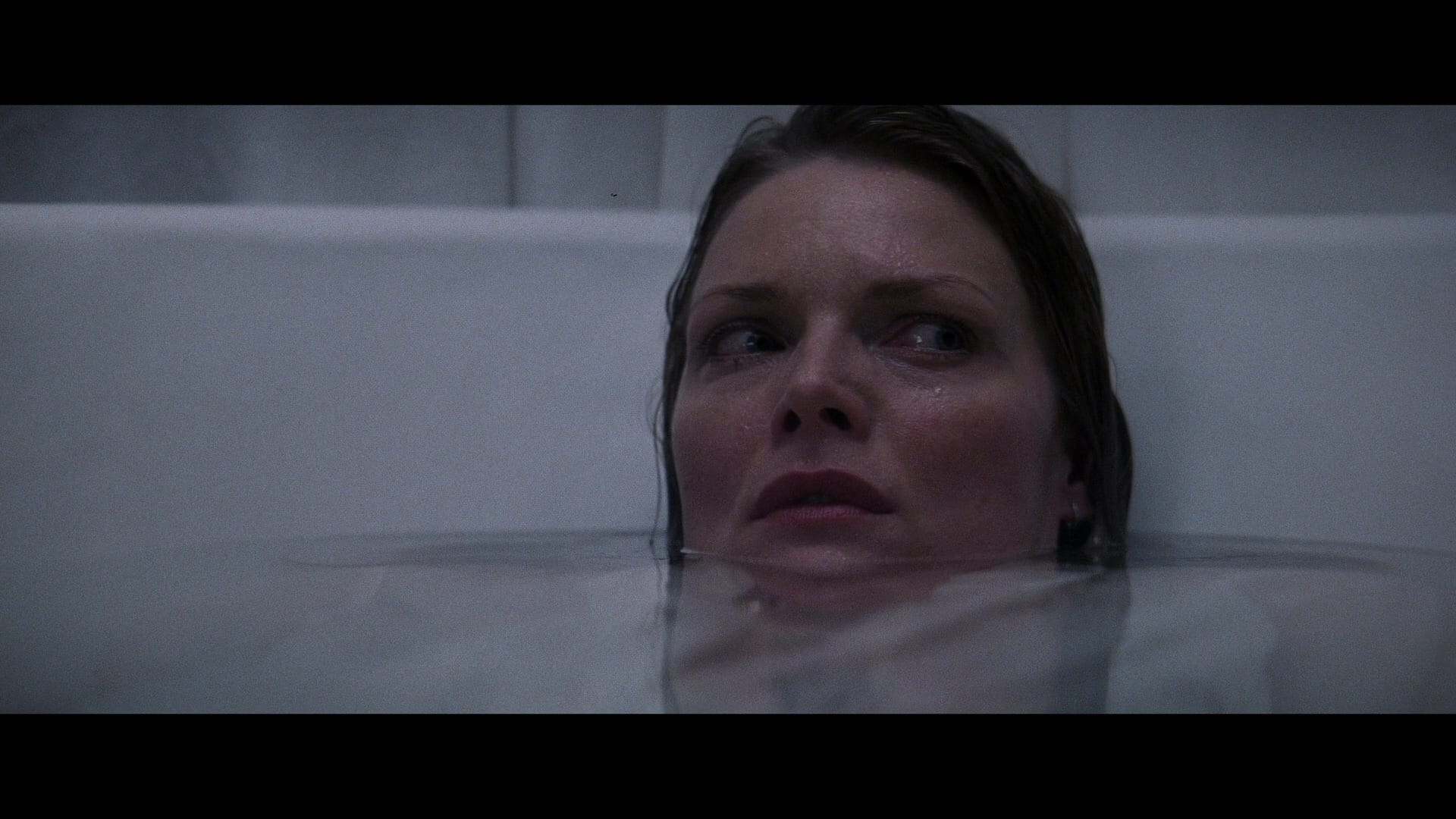
Pfeiffer is genuinely great in What Lies Beneath, and she has to be, since for long stretches she’s the only person on-screen. That’s another thing that makes Zemeckis’ embrace of the unreal so frustrating: He is so, so good at seeing an actor’s strengths and showing them to the audience. He knows Pfeiffer can handle all the silent exposition as empty-nester Claire moves through her home trying to figure out what else is in there with her – and what it wants. He knows we’ll be invested in Pfeiffer’s slightest change of expression, and that for all the challenges to Claire’s perspective – a therapist, her friends and most of all her distracted husband Norman – we’ll know she’s on to something.
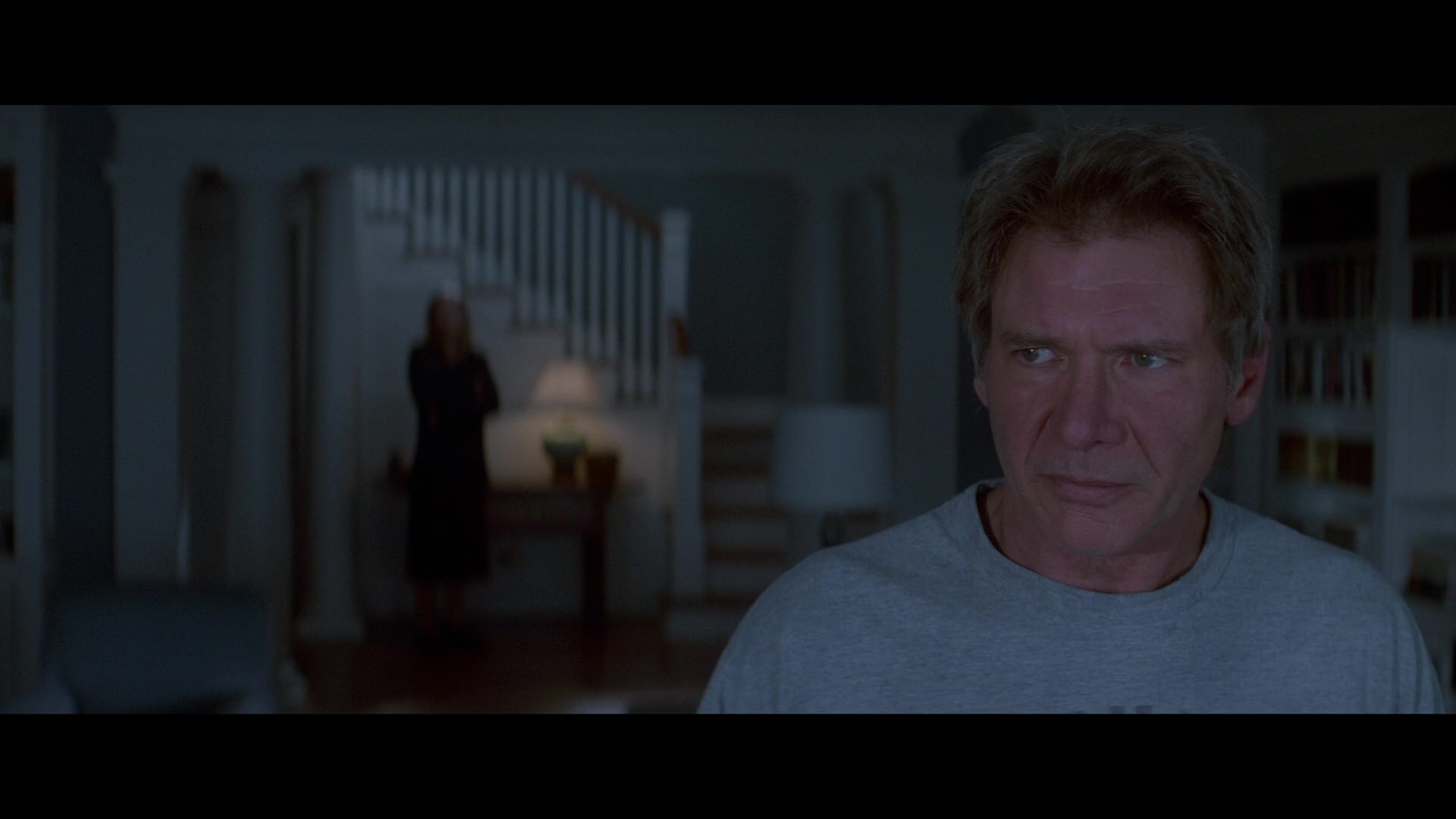
Ford’s pretty good too, and Zemeckis gets the rare performance out of the actor that channels his dismissive, cranky essence. Norman doesn’t believe Claire’s experiencing anything supernatural because he’s a rational man of science who’d rather be banging his hot wife in their empty house than listening for whispers in the dark. That makes sense, but it also sets up a snappish, selfish side for Norman that Ford was rarely willing to play; he hinted at it in Presumed Innocent, but Rusty Sabich’s whole thing was projecting strength in the face of total collapse; Norman is just a jerk, as it turns out, and Zemeckis gets Ford all the way there. He’s even whiny in a couple of scenes, which is downright startling from a guy with a voice that deep.
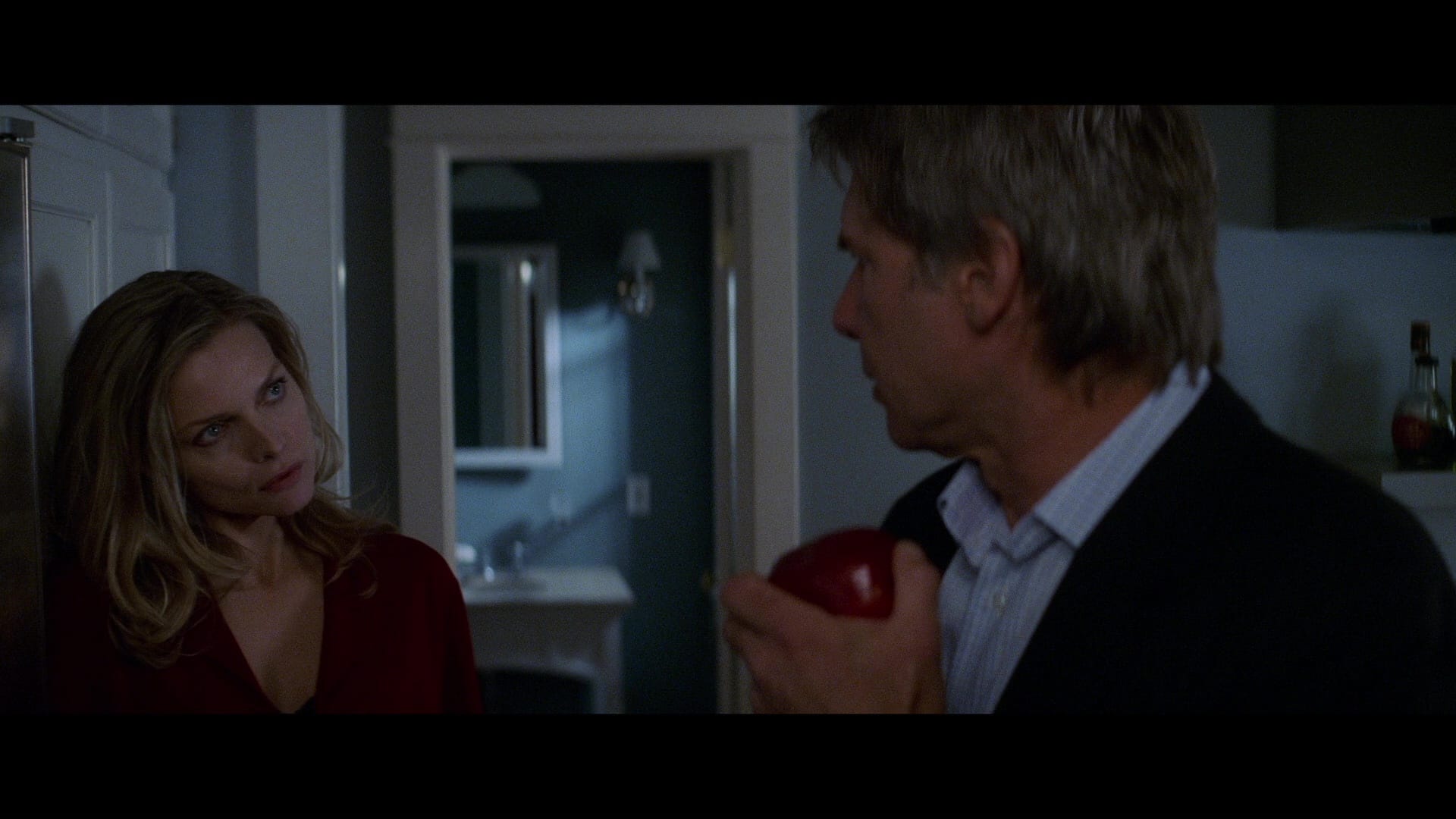
And as Claire and Norman inch towards some unpleasant revelations and a climactic confrontation, What Lies Beneath gradually abandons its icy ambivalence to go full Hitchcock – though Hitchcock would have been a lot more ambiguous about certain story elements, and Zemeckis can’t help turning them up to 11. The last act of the film turns frenzied and manic, with Alan Silvestri doing his best Bernard Herrmann and Don Burgess’ camera swooping and spinning through Claire and Norman’s perfectly appointed home as the couple finally comes apart under pressure. It doesn’t fully land, because we took too long to get there, but Pfeiffer and Ford play it perfectly. And I’ve done a better job of hiding the plot twists than the entire DreamWorks marketing department.

Shout’s 4K/Blu-ray combo offers a pristine new Ultra High Definition transfer of the feature, mastered from the original camera negative and approved by DP Don Burgess; the soundtrack is offered in 5.1 and 2.0 DTS-HD. The audio commentary Zemeckis recorded for the 2000 DVD release accompanies the feature on both platters; that contentious theatrical trailer and an archival featurette, “Constructing the Perfect Thriller,” appear on the Blu-ray along with an excellent new retrospective documentary, “You Know: Uncovering What Lies Beneath.”
Directed by Brian Ward for Slushpile Entertainment, the feature-length doc offers an impressively detailed examination of the film’s production, release and legacy. Ward talked to pretty much everyone other than Ford and Pfeiffer – even screenwriter Clark Gregg and co-star Amber Valetta – to assemble what has to be the definitive look at the film.

We get all the anecdotes we’d expect from this sort of production – glowing tales of Zemeckis’ innate understanding of the characters’ motivations (and his literalization of the title, with a number of scenes taking place in the “beneath” – like the office of Joe Morton’s therapist being set below street level) and Gregg remembering how stunned he was to see the production construct the Spencer house on a patch of unoccupied land after location scouts failed to find a standing home that could accommodate the requirements of his script.
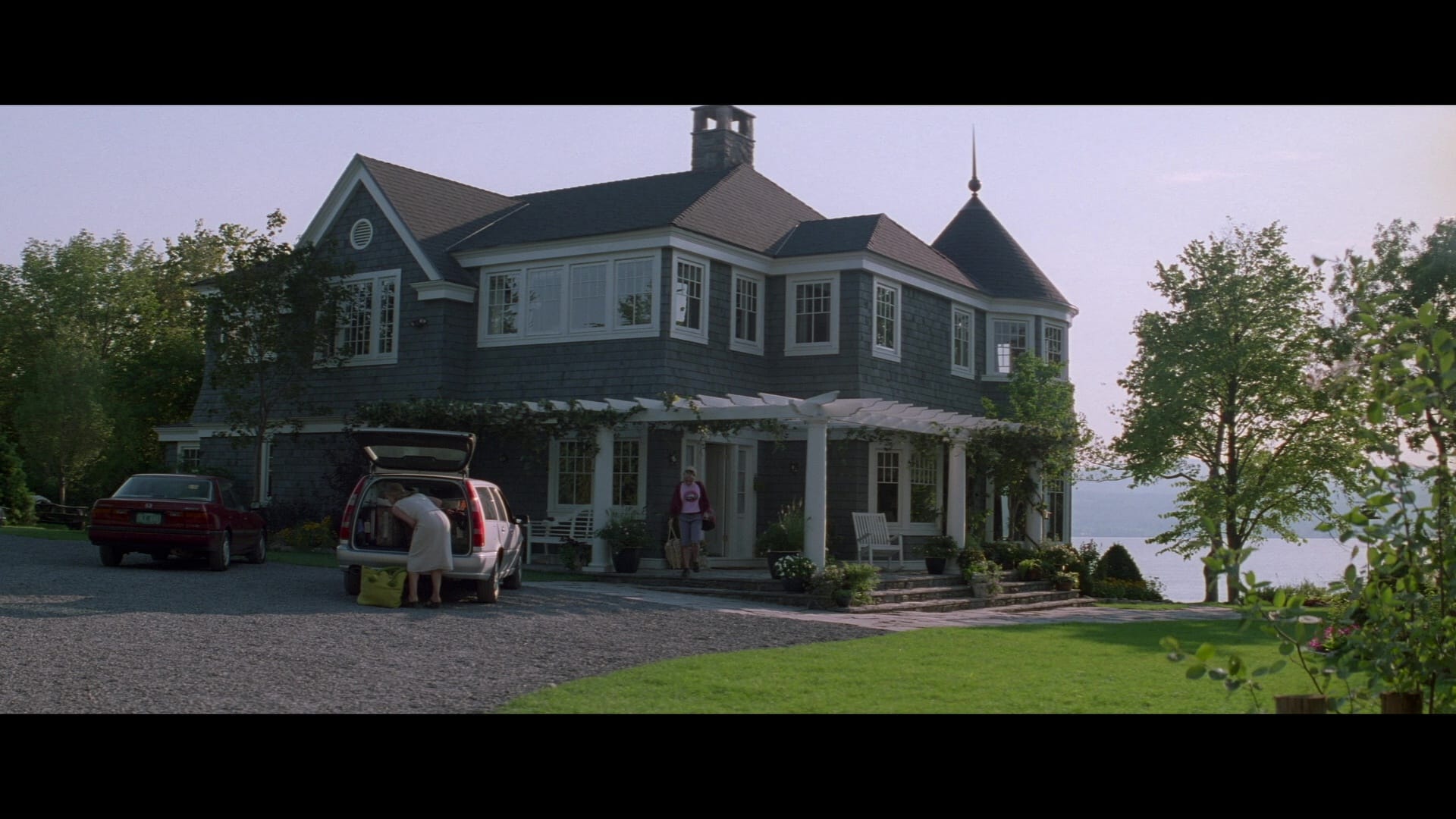
Ward also includes more than a few stories in which Zemeckis overcomplicated almost everything about the production, devising ways both practical and digital to get the camera into places it maybe didn’t need to be, like a long tracking shot through the Spencer home that required Pfeiffer to “dance” around the extended arm of the camera mount or the various low angles that necessitated the disassembling of a set’s floorboards or the removal and digital re-creation of a car’s windshield so the camera could get a shot of Claire in the driver’s seat. Good shots? Sure. Do they need to be that complicated? Ask Alfred Hitchcock, I guess.
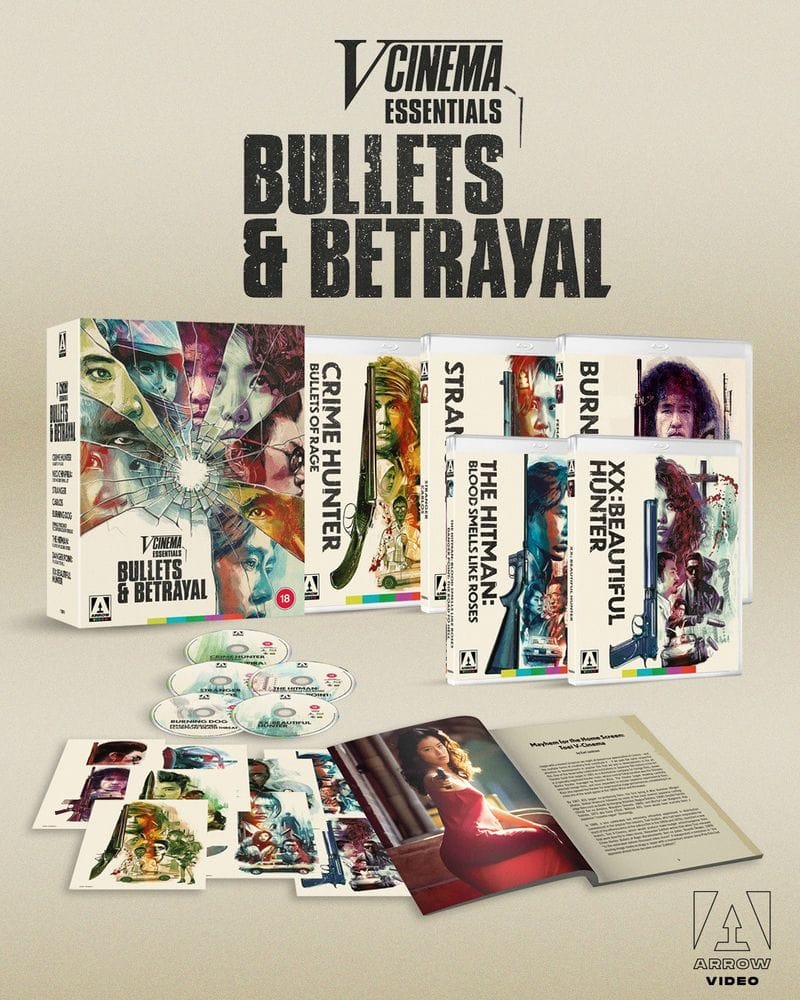
On the other side of the spectrum, there’s Arrow’s V-Cinema Essentials: Bullets and Betrayal collection, consisting of nine extremely low-budget thrillers that collectively cost less than Clark Gregg’s aforementioned dream house.
Produced by Japan’s Toei studio in the late ’80s and early ’90s as straight-to-video fodder for audiences who just wanted to bring home something with cool box art and a grabby title (like, say, Neo Chinpira: Zoom Goes the Bullet), these films offer genre at its most generic, with as many shootouts, car chases, explosions and love scenes as their producers could pack into an hour and a half.

Disc 1 kicks off with the project that kicked off Toei’s V-Cinema wave, Toshimichi Okawa’s Crime Hunter: Bullets of Rage. A thriller about a detective (Masanori Sera) teaming up with a nun (Minako Tanaka) to find the thugs who killed his partner and robbed her church, it’s neither original nor especially distinguished – and it’s not even an hour long! – but it’s busy and violent, and in 1989 that’s all that people were looking for. Banmei Takahashi’s Neo Chinpira is a slightly more elaborate production, with Sho Aikawa as an up-and-coming gangster trying to complete a trial hit for the clan he wants to join – and running into all manner of opposition.
Disc 2 pairs Shunichi Nagasaki’s Stranger, starring Yuko Natori as a cabbie with a past who finds herself tailed over one long shift by a mysterious truck, with Kazuhiro Kiuchi’s Carlos, starring James Fujiki as a would-be player who tries to manipulate two gangs and winds up caught between them.
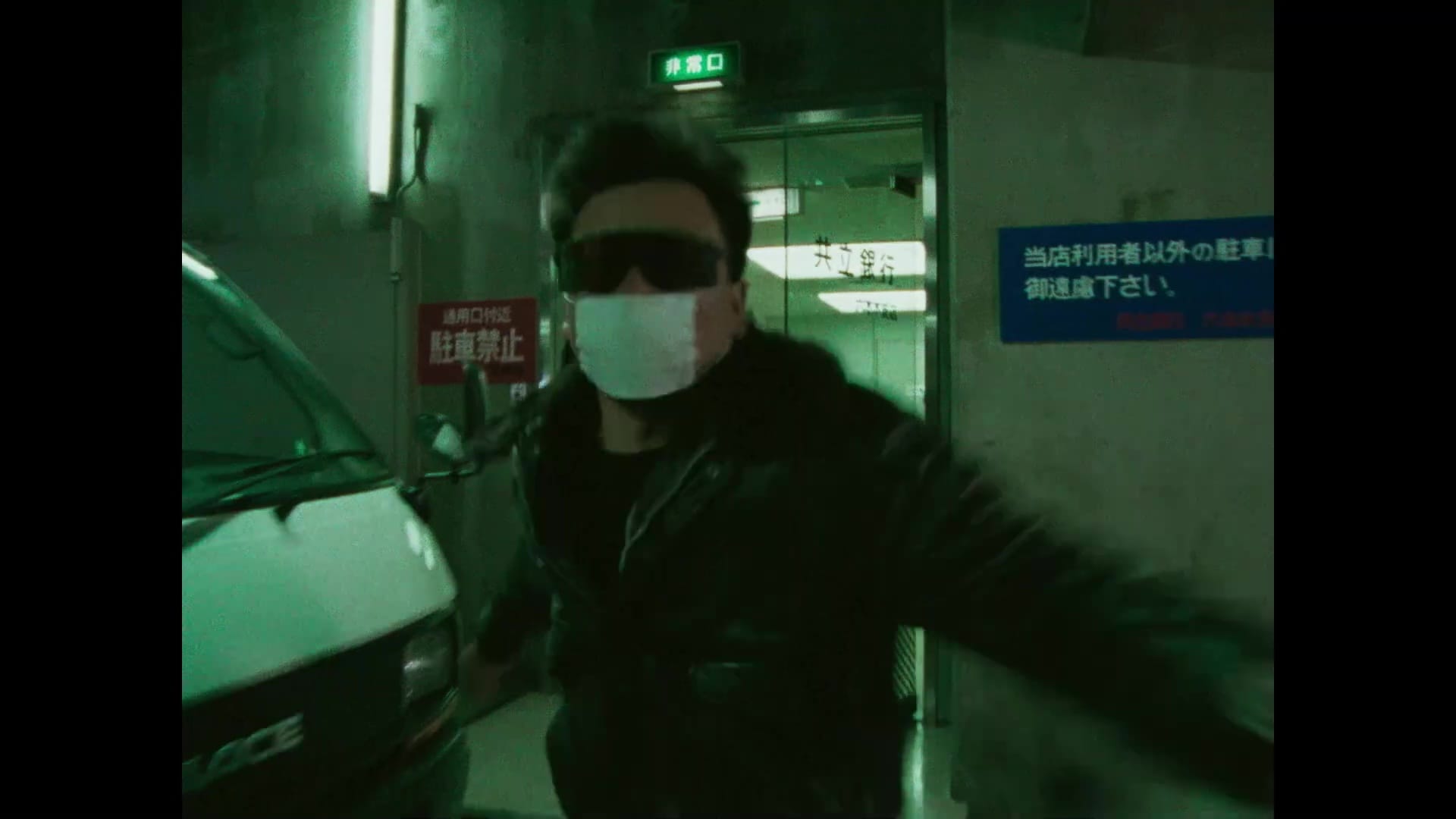
Disc 3 offers Yôichi Sai’s Burning Dog, a clever heist picture about a gang of pros planning to raid an American military base in Okinawa, while Toshiharu Ikeda’s Female Prisoner Scorpion: Death Threat – the latest adaptation/reboot in the long-running Female Scorpion franchise – sends a new assassin (Naoko Amihama) into Japan’s scariest women’s prison to make contact with the legendary Scorpion, who’s vanished inside. (Hey, it worked for Beneath the Planet of the Apes.)
Disc 4 has Teruo Ishii’s The Hitman: Blood Smells Like Roses, a revenge thriller about an ordinary man (Hieki Saijô) who declares war on the yakuza after his fiancée is killed in their crossfire, and Yasuharu Hasebe’s Danger Point: The Road to Hell, which reunites Neo Chinpira co-stars Sho Aikawa and Joe Shishido as two low-rent hitmen whose latest assignment gets them targeted by the entire criminal underworld.
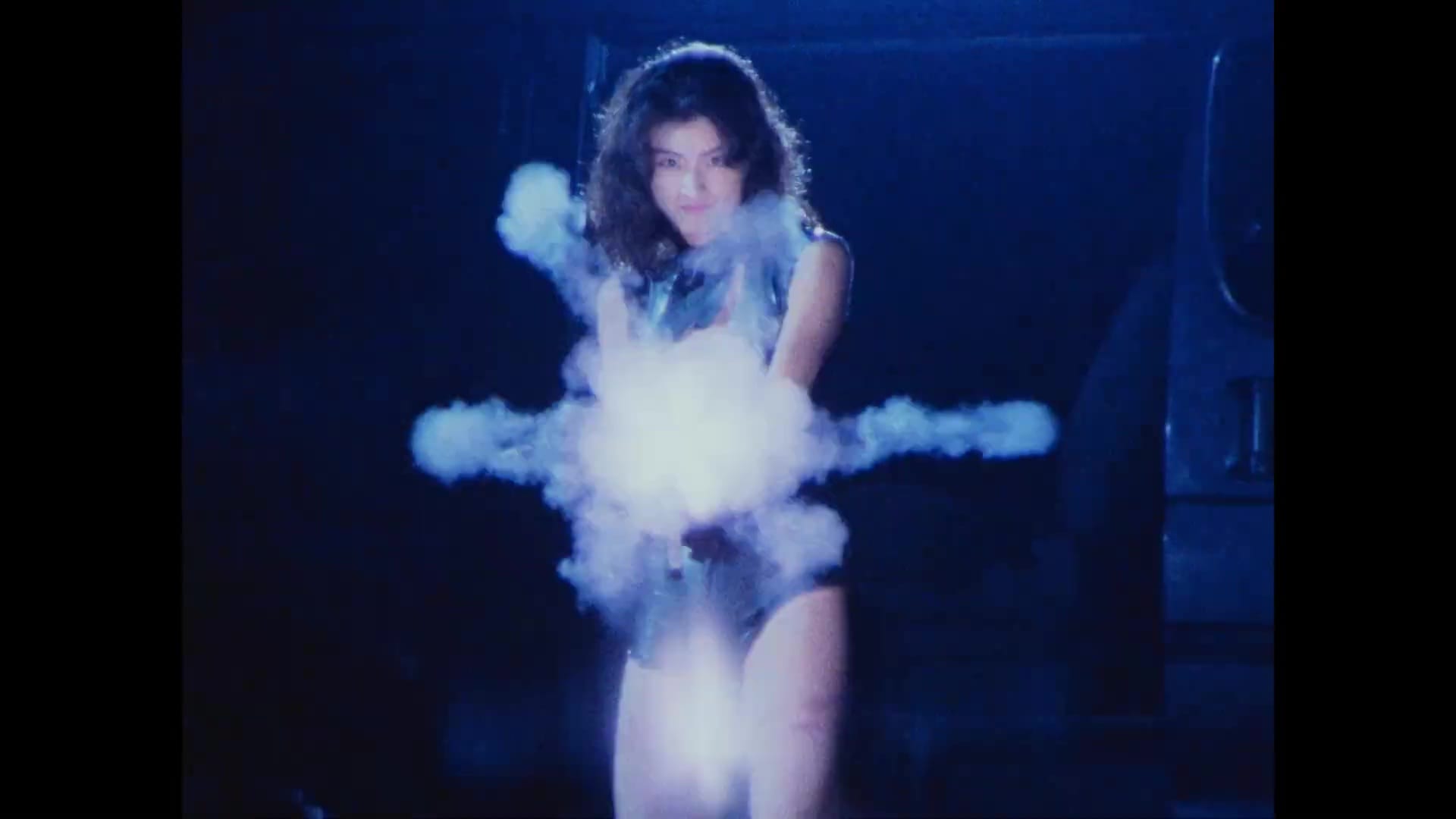
And over on Disc 5, Masaru Konuma’s XX: Beautiful Hunter stars Makiko Kuno as the world’s hottest assassin, who must go on the run when she’s ordered to take out the only man she’s ever loved.
These aren’t complicated movies, but that’s sort of the point: They’re all exercises in remixing what audiences were going to see in theaters with cheaper talent and a lot less flash, but sometimes that turned out pretty well. Stranger gets points for its shameless mashing up of Spielberg’s Duel and Scorsese’s Taxi Driver (and centering the story on a woman puts an interesting spin on the central dynamics of both films), while both Burning Dog and Danger Point spend a lot of time developing their characters, introducing backstories and motivations that are just a little smarter and more engaging than they need to be.
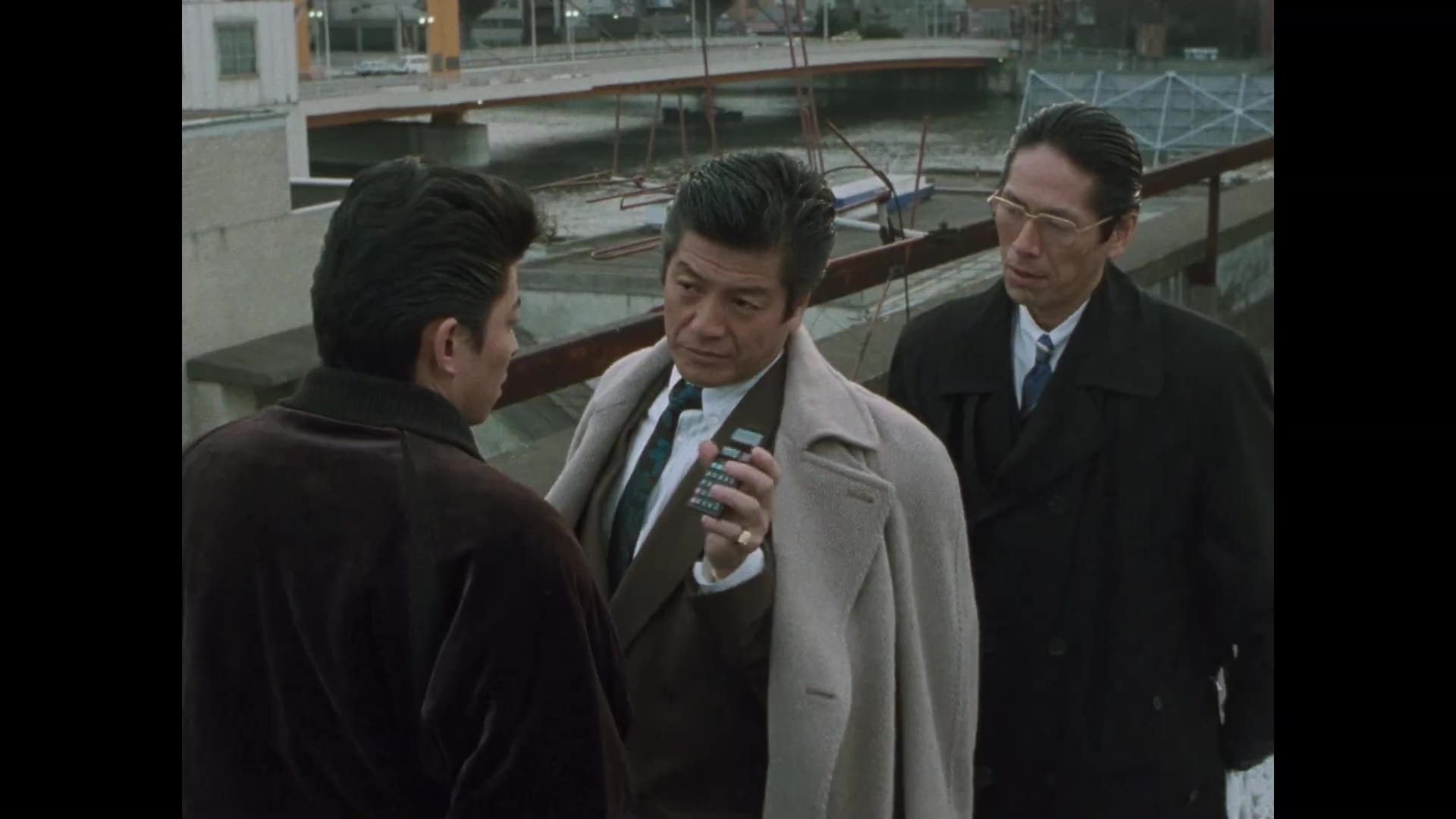
Arrow’s new 1080p masters present all nine features in far better quality than their creators ever intended – their 4:3 aspect ratio is a fun reminder of the distinctly lo-fi restrictions of VHS tape – with remastered audio (mono for Crime Hunter, stereo for the rest) and a wealth of newly produced supplements.
Japanese critic Masaki Tanioka provides brief but considered introductions for each film, there are interviews with the directors of Crime Hunter, Neo Chinpira, Stranger and Carlos, and Beautiful Hunter screenwriter Hiroshi Takahashi, and new video essays for seven of the nine features. The original trailers are included where available, in a state that gives you a sense of what the movies would have looked like at the time.
As someone who started his career reviewing straight-to-video movies, going through this set had a nice, nostalgic vibe. None of these films is a classic; most of them are barely remembered today. But they get the job done … and if that job is a little on the messy side, well, that’s just what happens when you go with what you can afford. An explosion is still an explosion, in the end.

What Lies Beneath is available in a 4K/Blu-ray combo from Shout! Studios. Here is available on Blu-ray from VVS Films in Canada and Sony Pictures Home Entertainment in the US. V-Cinema Essentials: Bullets and Betrayal is available in a Blu-ray boxed set from Arrow Video. Choose your poison!
Up next: Bong Joon-ho’s latest crashes onto disc, and a classic Robert Wise techno-chiller arrives in 4K. Brace yourself.
